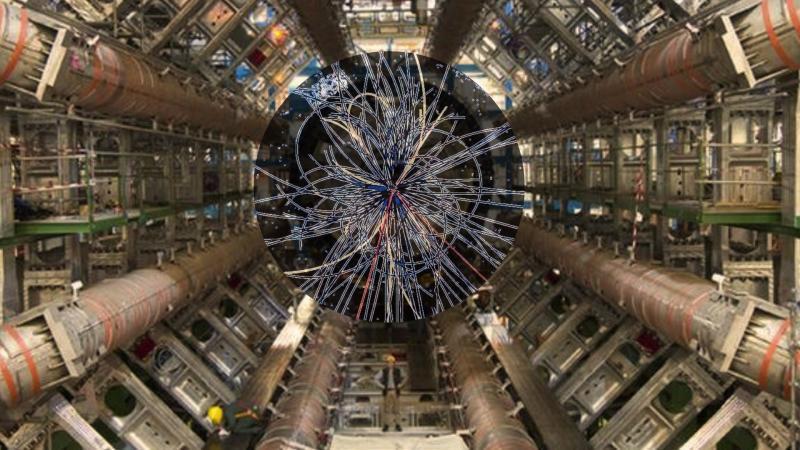
CERN Scientists Shedding Light on Antimatter & Universe’s Origins
The mysteries of the universe have long fascinated human minds, and scientists at the European Organization for Nuclear Research (CERN) are making significant progress in unraveling one of the most intriguing enigmas: antimatter. Recently, the ALICE collaboration at CERN’s Large Hadron Collider (LHC) confirmed the first evidence of antihyperhelium-4, a groundbreaking discovery that offers valuable insights into the fundamental forces of nature. This breakthrough has the potential to revolutionize our understanding of matter-antimatter balance and the universe’s early moments.
Antimatter, a phenomenon that has long fascinated scientists and the general public alike, is a type of matter that has the opposite charge of regular matter. When antimatter comes into contact with regular matter, it annihilates, releasing a vast amount of energy in the process. This concept may seem like science fiction, but it is, in fact, a fundamental aspect of the universe.
The ALICE collaboration, which consists of researchers from 39 countries, has been studying heavy-ion collisions at the LHC to better comprehend the properties of antimatter. By colliding lead ions at nearly the speed of light, scientists can create an environment that mimics the conditions of the early universe, just fractions of a second after the Big Bang.
The recent discovery of antihyperhelium-4 is a significant milestone in this research. Hyperhelium-4, a form of helium with an extra proton and neutron, is already an exotic particle. However, its antiparticle, antihyperhelium-4, is even more rare and elusive. The ALICE collaboration detected the antihyperhelium-4 particles by analyzing the decay products of the heavy-ion collisions.
“This is a major breakthrough in our understanding of antimatter,” said Dr. Andrea Fontanelli, spokesperson for the ALICE collaboration. “The discovery of antihyperhelium-4 provides us with valuable insights into the fundamental forces of nature and the balance between matter and antimatter.”
The existence of antimatter is not new, but the lack of understanding about its properties and behavior has long been a subject of interest for scientists. The ALICE collaboration’s discovery of antihyperhelium-4 offers a unique opportunity to study the properties of antimatter in more detail.
“Antihyperhelium-4 is an extremely rare particle, and its detection requires sophisticated detectors and advanced analysis techniques,” said Dr. Andrea Fontanelli. “The ALICE collaboration’s achievement is a testament to the power of international collaboration and the importance of fundamental research in understanding the universe.”
The implications of this discovery are far-reaching and have the potential to impact our understanding of the universe’s origins. The early universe was a hot and dense environment, where the laws of physics were different from those we observe today. The detection of antihyperhelium-4 provides a unique window into this early universe, allowing scientists to study the properties of antimatter under conditions that are no longer present today.
“This discovery opens up new avenues for research into the early universe,” said Dr. Luciano Musa, a physicist at CERN. “By studying the properties of antimatter, we can gain insights into the fundamental forces of nature and the balance between matter and antimatter in the early universe.”
The ALICE collaboration’s discovery of antihyperhelium-4 is a significant step forward in our understanding of antimatter and the universe’s origins. As scientists continue to study this phenomenon, they will gain valuable insights into the fundamental forces of nature and the balance between matter and antimatter.
In conclusion, the CERN scientists’ discovery of antihyperhelium-4 is a groundbreaking achievement that has the potential to revolutionize our understanding of the universe. The ALICE collaboration’s research at the LHC has provided a unique opportunity to study the properties of antimatter in detail, offering valuable insights into the fundamental forces of nature and the balance between matter and antimatter.
As we continue to explore the mysteries of the universe, the discovery of antihyperhelium-4 serves as a reminder of the importance of fundamental research and international collaboration. With the power of human curiosity and innovation, we can continue to unravel the mysteries of the universe, shedding light on the origins of matter and the fundamental forces that govern our cosmos.
News Source:
https://researchmatters.in/news/exotic-antimatter-spotted-heavy-ion-collisions-lhc






